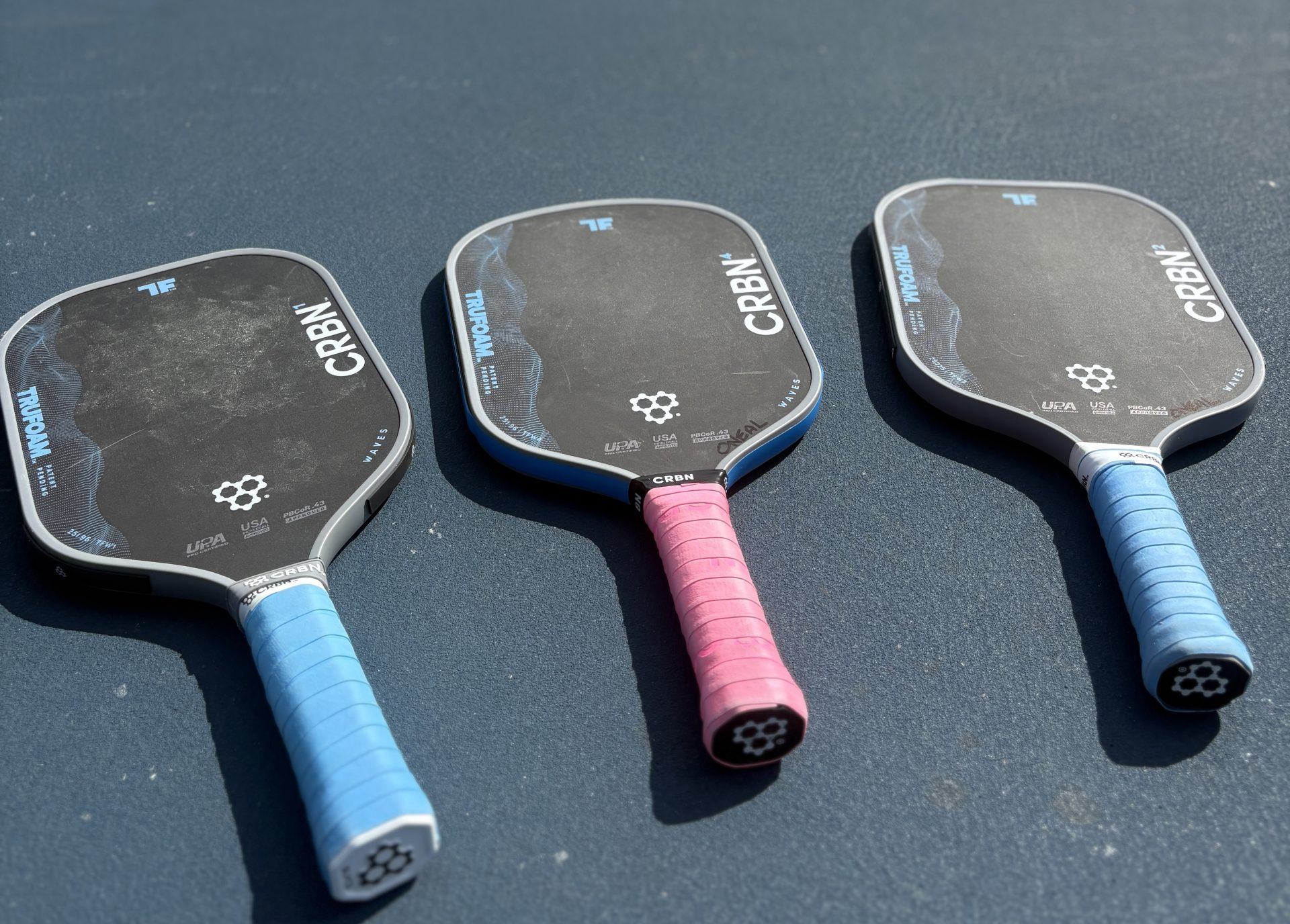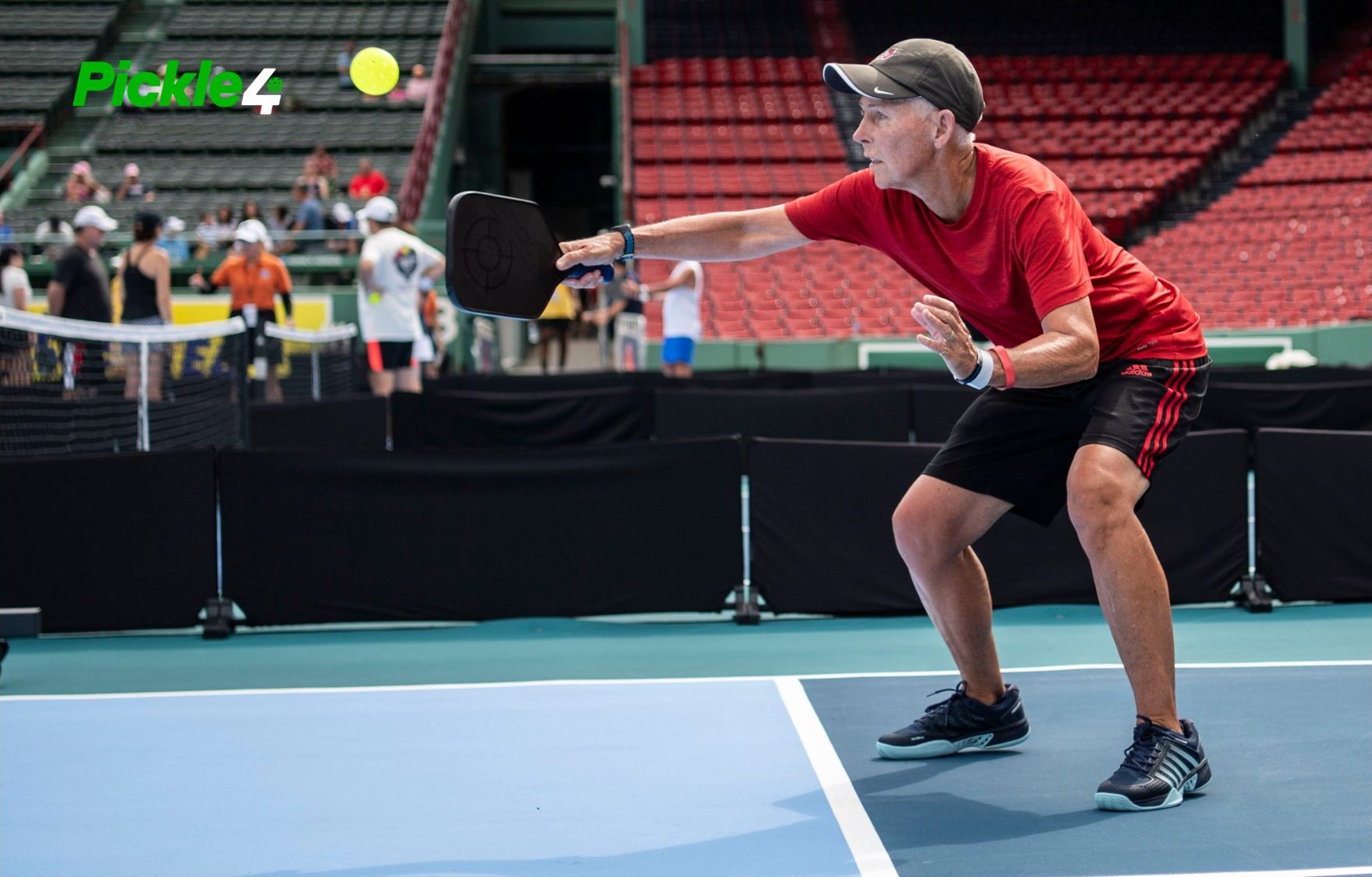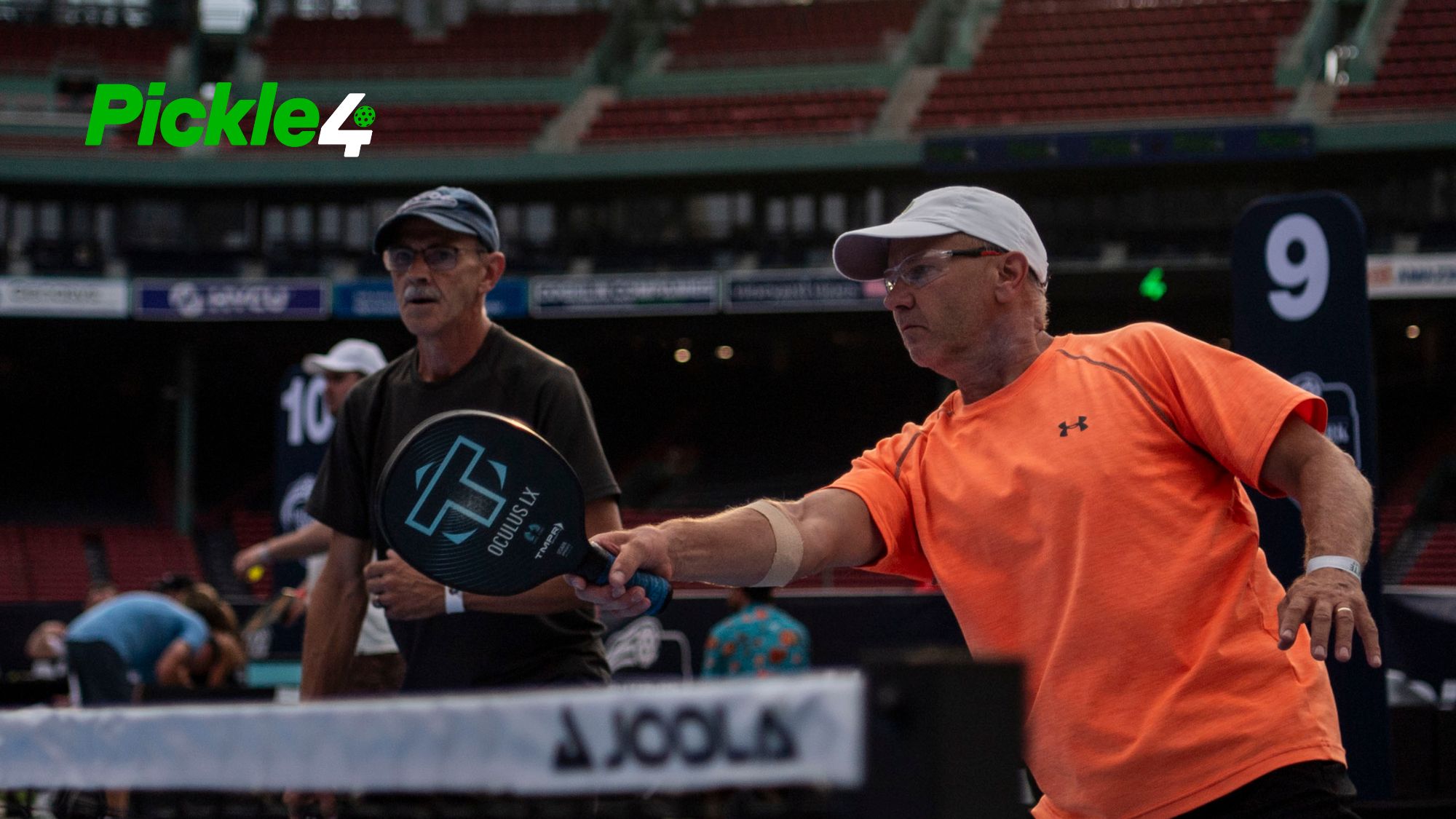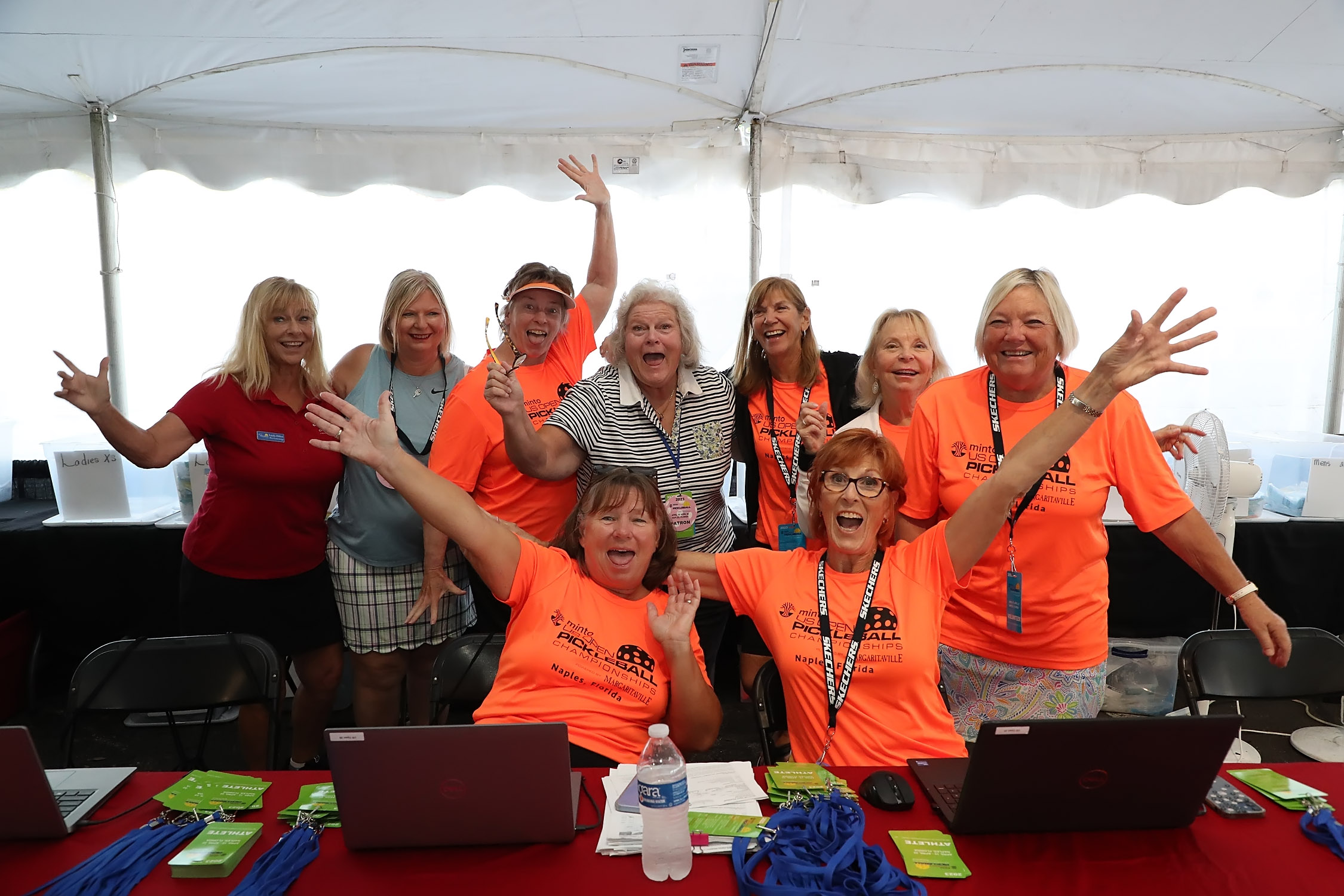“You’ve got people feeling like they’re an athlete for the first time in their life.”
© Discovery Communications
“Mitch and Lisa? Everyone knows Mitch and Lisa.”
Though Lisa cites many moments of communal humor, she and Mitch are not a comedy act. They are one of many fabled mixed pickleball teams, along with Jill and Mark, Pete and Kim, Brad and Melinda, Dee and Maverick.
“How do you know Mitch and Lisa?”
These questions are being asked just after 8:00 p.m. on a sultry Wednesday night at Memorial Park in Santa Monica, Calif., just outside of Los Angeles. Wednesday and Monday are the evenings when pickleball is played on three of Memorial’s four tennis courts. Since one tennis court can accommodate four pickleball courts, there are 12 pickleball courts active with what’s called “Open Play.” It’s strictly doubles: 48 competitors, with nearly as many lined up to play. No games are pre-arranged. If you’re new, an on-site ambassador—pickleball’s version of a concierge—will toss you into a foursome.
“You just jump in the sandbox and play with the other kids,” says Stacy Margolin Potter, a former WTA pro who plays pickleball frequently in Ojai, 85 miles northwest of L.A.
A game lasts approximately 20 minutes, a fast-paced carousel that starts at 5:00 and often goes past 10:00.
“Are Mitch and Lisa here?”
Not tonight. Each resides in the San Francisco Bay Area, 400 miles north of Santa Monica. Such is pickleball’s communal lure. Memorial Park is one of many places Mitch and Lisa play, up and down the coast of California, from Paso Robles to San Luis Obispo to Thousand Oaks to Palm Desert. They’ve played in Florida, Nevada and Arizona, too. Always clad in her black Lacoste hat, Lisa walks onto the court accompanied by the hard-driving Led Zeppelin classic, “Kashmir.”
“Don’t you think everyone should have a song?” she asks.
What is driving the pickleball movement in reaching such a wide demographic? For starters, the sport provides a positive boost to overall wellness.
Seven miles south, at Westchester Recreation Center, the fitting tune might be The Doobie Brothers’ “Taking it to the Streets.” Last December, Westchester resident Tom Brewster received permission to pay for three hours of court time on two of the facility’s eight tennis courts. Equipped with blue masking tape, it took Brewster nearly 90 minutes to measure and line five pickleball courts.
It was worth it. Day one saw 50 attendees. On a crisp and breezy Saturday afternoon in April, there were more than 70. In the southwest corner, a foursome took a strategy lesson from Leslie Howard, a former tennis student of Vic Braden. On the other five courts, ambassador Mike Koss orchestrated the games and took voluntary donations from players to defray Brewster’s costs.
People often leave tennis because they have difficulty finding opponents. Thanks to its ambassadors, pickleball eliminates that hurdle. Matt Denoff, an ambassador in Culver City frequently seen at Memorial, estimates there are at least 20 ambassadors in a section of Los Angeles that stretches 25 miles east-to-west from Malibu to West Hollywood, and 15-20 miles north-south from Mulholland Drive to LAX.
Tennis Channel and the PPA Tour have created Pickleballtv, a standalone pickleball channel, along with separate websites and apps solely dedicated to the sport.
Several clubs in Southern California have made major commitments to pickleball. In Encinitas, 25 miles north of San Diego, a club named for tennis legend Bobby Riggs has been rechristened Bobby Riggs Racket & Paddle, with 14 pickleball-exclusive courts and another six lined across tennis courts. In Orange County, an hour southeast of L.A., there’s The Tennis Club at Newport Beach, with 16 dedicated tennis courts and another 31 for pickleball. According to club owner Sean Bollettieri-Abdali, “Everyone’s happy, everyone’s supportive, everyone wants to play with each other.”
Pickleball has also gained traction in Hollywood. Jamie Foxx, Kim Kardashian, Larry David and Leonardo DiCaprio are among the celebrities getting in on the action. Stephen Colbert and his production company are busy at work on Pickled, a two-hour primetime special set to air on CBS later this year.
Many factors have driven the game’s appeal. “It’s easy to learn,” says Stu Upson, CEO of USA Pickleball. “You can get out there in an hour and not embarrass yourself. Other sports take so much longer.”
As Anna-Maria Fernandez Ruffels, a former WTA pro now teaching pickleball at Mission Hills Country Club, says,
“You’ve got people feeling like they’re an athlete for the first time in their life.”
The opportunity to be both validated and belong to a community in the context of friendly competition is highly unique.
With such a fast learning curve, pickleball players are quickly tossed into the more nuanced realm of tactics. “It’s a chess game that’s social,” says Corpus Christi, Texas-based Hilary Marold, who was inducted into the Pickleball Hall of Fame in 2020.
Add in a physical benefit. “It’s a miracle worker on the body,” says Nels Van Patten, a longstanding L.A.-based tennis instructor. “Pickleball doesn’t hurt your joints or tendons.”
But there’s something deeper fueling pickleball’s ascent—less mental or physical, more from the heart and perhaps even the soul. In 2000, Harvard political scientist Robert Putnam wrote that a telling sign of societal decline was that fewer Americans were participating in communal activities. Sadly, social distance accelerated two years ago when the pandemic began. Enter a paddle and a wiffle ball.
“Pickleball was the perfect COVID pastime,” says Morgan Evans, a Palm Desert-based instructor. “People were drawing lines themselves, putting up courts in their driveway, meeting neighbors they’d never met.”
All through those stressful and uncertain days, exercise for Jim was a solitary run near his home in the San Francisco suburbs. “I hadn’t seen a soul for months,” he says.
Jim ran past Rudgear Park in Walnut Creek, he heard a new sound. “There was popping and feint chatter. Someone said, ‘Grab a paddle.’ I got my ass whipped by an 80-year-old.”
That night, Jim ordered a paddle. When work shipped him to L.A. for a few months, Jim headed to Memorial Park. “I’ve made so many friends from pickleball,” he says.
For Damon, the pandemic was perilous. In April 2021, he lost the hearing in his left ear. An ardent tennis and paddle tennis player, Damon was now unable to hear the sound of the ball. Forced to abandon the sports he’d long loved, Damon was despondent. Then his aunt asked a question: Why don’t you try that clickety-clack game? Able to hear the pickleball, Damon’s now a regular at Memorial.
According to John Gill, CEO of the World Pickleball Association and tournament director of the Southern California Pickleball Championships, “It’s fun, it’s fitness, it’s easy, it’s safe, it’s social, it’s friendly. I’ve never seen so many people laugh.”
Memorial Park ambassador Ho Nguyen concurs. “This is Cheers for us,” he says, a reference to the popular sitcom set in a friendly pub.
But why stop with just a few drinks? Check out Chicken N Pickle. Located in Kansas, Oklahoma and Texas, each Chicken N Pickle outlet features ample pickleball courts and a restaurant specializing in wood-fired chicken.
Several professional pickleball circuits have also emerged, from Major League Pickleball to the PPA Tour to the Association of Pickleball Professionals. As is the case at all levels, tennis players pervade. APP founder and CEO Ken Herrmann was once a USTA coach and this May ran the APP $125,000 New York City Open, a tournament featuring 1,600 participants played at the USTA Billie Jean King National Tennis Center. Recreational pickleball players relish the chance to compete at the same events as the pros, sharing facilities and war stories.
It’s anticipated that athletes from other sports will soon make their way to pickleball and potentially even alter the way the game is played.
“Wait until badminton players start playing and you’ll see all the incredible things they can do to generate snap and racquet-head speed,” says Ian Potter, a former top badminton player who plays pickleball in Ojai. Upson, Gill and others are also working to get pickleball in the Olympics.
So much about pickleball adds up to an enticing equation: competition plus camaraderie equals community. Check out many a pickleball facility and you’ll see that cliquishness is close to non-existent.
“The expectation is that you’ll play with someone new,” says Jo Baker, a Berkeley-based player.
“Pickleball offers something powerful: the chance to enjoy the vulnerability and excitement provided by competition—and at the same time, build connections,” says sports psychologist Jeff Greenwald. “The opportunity to be both validated and belong to a community in the context of friendly competition is highly unique.”
It’s anticipated that athletes from other sports will soon make their way to pickleball and potentially even alter the way the game is played.
But pickleball’s hippie commune days will not last forever. Competitive hierarchy has started to create distance, to the point where players of certain levels won’t play with others. As much as the ambassadors seek to throw everyone in the sandbox, such separation appears inevitable—but perhaps, not as thorough.
Many pickleball aficionados say they’re keen to take over tennis, dismissing the sport as humorless and exclusionary. Then there are tennis devotees who look down at pickleball as too easy and therefore of limited physical and intellectual value. Even some who’ve abandoned tennis for pickleball joke about going to what several call “the dark side.”
Golly, isn’t there enough divisiveness in the world? Must even court sports bicker?
In his earlier career, Denoff operated several restaurants. Asked to invent the unofficial pickleball cocktail, he kicked into high gear. The name: “The Kitchen Sour,” a nod to the front part of a pickleball court, where those subtle dinks float and dip.
Denoff’s concoction is comprised of honey whiskey, egg whites, simple syrup, lemon juice and a bit of cinnamon. As he explains, the drink is “sweet and sour, so sometimes you’re going to hit a very sweet shot which will feel very comfortable, and other times you’ll hit a bad shot that makes you feel a little sour.”
The cinnamon “gives it a little bit of a strange twist, because pickleball is a little bit of a different sport.”
So here is the racquet sports community, devouring pickleball. Perhaps more than anything, as the Cheers lyrics go, pickleball is a community “where everybody knows your name.”
Just ask Mitch and Lisa.
What's coming up on PBTV? Find out here.
Anuncie Aqui / Advertise Here
Sua marca para o mundo Pickleball! / Your brand for the Pickleball world!

 English
English  Spanish
Spanish  Portuguese
Portuguese  German
German  Italian
Italian  Japanese
Japanese  French
French  Polish
Polish  Russian
Russian  Netherlands
Netherlands  Hungarian
Hungarian  Turkish
Turkish  Videos
Videos 








 English (US) ·
English (US) ·  Portuguese (BR) ·
Portuguese (BR) ·